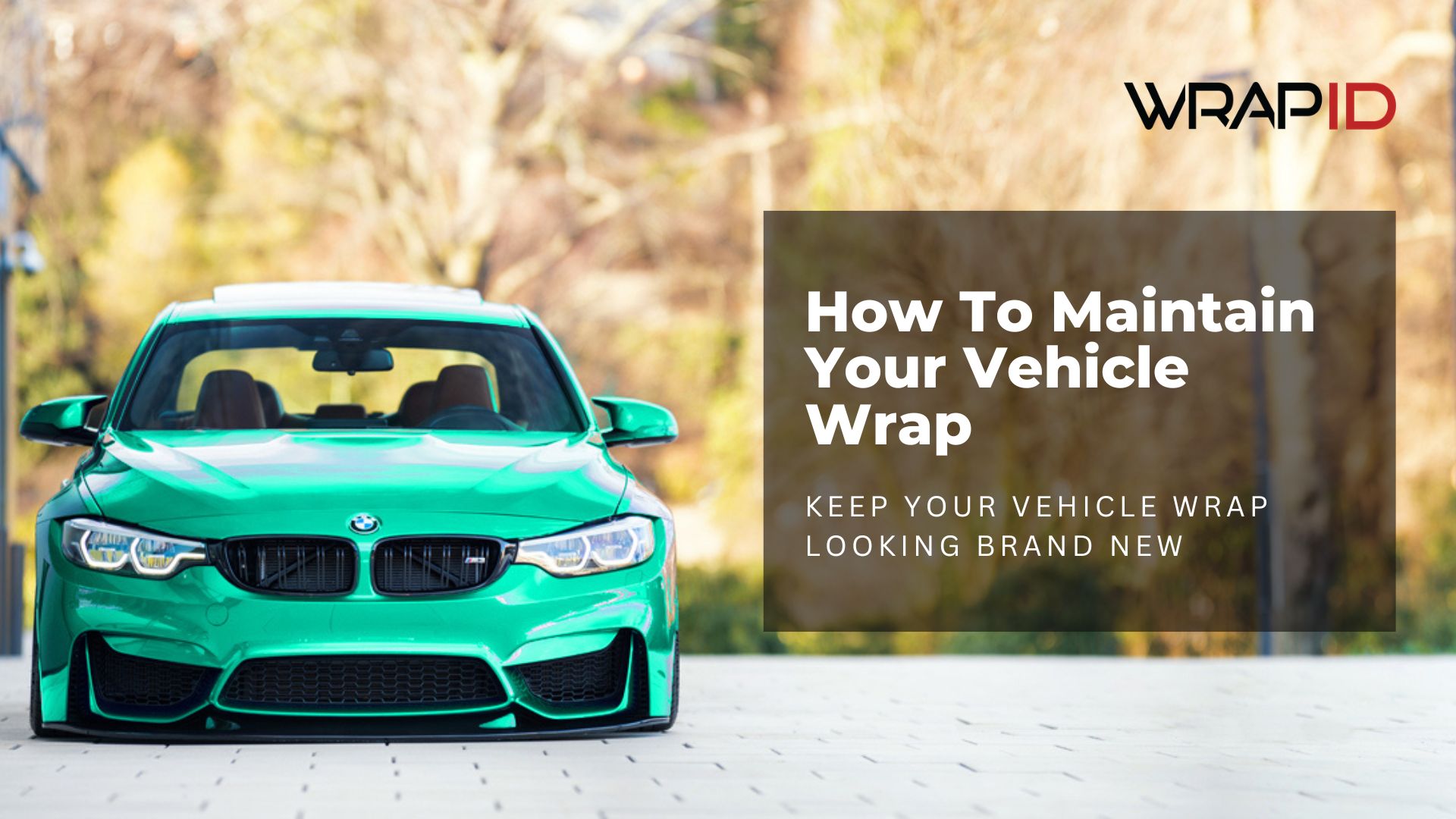
Vehicle wraps are a fantastic way to personalize your car, protect the original paint, and even advertise your business. However, to ensure your wrap remains vibrant and intact for as long as possible, it’s essential to follow proper maintenance practices. In this guide, we’ll provide you with tips and best practices to help you keep your vehicle wrap in top condition for many years to come.
1. Regular Cleaning
Why It’s Important:
Regular cleaning is crucial for maintaining the appearance and longevity of your vehicle wrap. Dirt, grime, and other contaminants can degrade the wrap material over time if not removed.
Best Practices:
- Frequency: Aim to wash your vehicle wrap once every two weeks, or more frequently if it’s exposed to heavy pollutants or harsh weather conditions.
- Method: Hand washing is the safest method for cleaning your wrap. Use a soft sponge or microfiber cloth to avoid scratching the surface.
- Soap: Choose a gentle, non-abrasive car wash soap. Avoid harsh chemicals and solvents that can damage the wrap.
- Rinse: Thoroughly rinse your vehicle with clean water to remove all soap residues, as these can cause staining or deterioration if left on the wrap.
2. Avoid Automatic Car Washes
Why It’s Important:
Automatic car washes, especially those with brushes, can be too abrasive for vehicle wraps. The brushes can cause scratches, lifting, or peeling of the wrap edges.
Best Practices:
- Alternative: Opt for touchless car washes if you must use an automatic facility. These use high-pressure water and mild detergents without physical contact, reducing the risk of damage.
- Hand Wash: Whenever possible, hand washing is still the best option to ensure gentle yet effective cleaning.
3. Immediate Removal of Contaminants
Why It’s Important:
Certain contaminants, such as bird droppings, tree sap, and bug splatter, can be acidic or sticky and may cause damage if left on the wrap for extended periods.
Best Practices:
- Action: Remove contaminants as soon as you notice them. The longer they stay on the wrap, the harder they become to remove and the more likely they are to cause permanent damage.
- Technique: Use a soft cloth or sponge and mild soapy water to gently scrub away the contaminants. For stubborn spots, use a dedicated vinyl wrap cleaner.
4. Protection from the Sun
Why It’s Important:
Prolonged exposure to UV rays can cause fading and degradation of your vehicle wrap over time.
Best Practices:
- Parking: Whenever possible, park your vehicle in a shaded area or a garage to minimize direct sun exposure.
- UV Protectant: Apply a UV protectant designed for vinyl wraps. These products help shield the wrap from harmful UV rays and can extend its lifespan.
5. Avoid Harsh Chemicals
Why It’s Important:
Harsh chemicals and solvents can weaken the adhesive and cause the wrap to deteriorate prematurely.
Best Practices:
- Products: Avoid using bleach, abrasive scrubbing pads, or strong solvents like acetone on your vehicle wrap.
- Safe Alternatives: Stick to products that are specifically formulated for use on vinyl wraps. These are gentle enough to clean effectively without causing damage.
6. Handling Edges and Seams with Care
Why It’s Important:
The edges and seams of a vehicle wrap are its most vulnerable points. Improper handling can cause these areas to lift or peel.
Best Practices:
- Washing: When washing your vehicle, avoid applying too much pressure to the edges and seams. Use gentle, sweeping motions instead of scrubbing vigorously.
- Inspection: Regularly inspect the edges and seams for any signs of lifting or peeling. If you notice any issues, address them promptly to prevent further damage.
7. Use of Wax and Polishes
Why It’s Important:
While waxes and polishes can enhance the appearance of a painted car, they can be detrimental to a vinyl wrap if not used correctly.
Best Practices:
- Compatibility: Only use waxes and polishes that are specifically designed for use on vinyl wraps. Traditional automotive waxes may contain ingredients that can damage the wrap.
- Application: Apply the product gently and evenly, following the manufacturer’s instructions. Avoid excessive rubbing or buffing, which can cause wear and tear on the wrap.
8. Professional Maintenance
Why It’s Important:
Periodic professional maintenance can help identify and address issues that may not be apparent to the untrained eye.
Best Practices:
- Inspection: Schedule regular inspections with a professional wrap installer. They can check for signs of wear, lifting, or damage and provide necessary repairs.
- Cleaning: Consider professional cleaning services that specialize in vehicle wraps. They have the expertise and equipment to clean your wrap thoroughly and safely.
Conclusion
Maintaining your vehicle wrap for longevity requires a combination of regular cleaning, careful handling, and protection from environmental factors. By following these tips and best practices, you can ensure that your wrap stays vibrant and intact, providing both aesthetic appeal and protection for your vehicle. Remember, investing a little time and effort into maintenance now can save you from costly repairs or replacements down the line. With proper care, your vehicle wrap will continue to turn heads and showcase your style for many years to come.